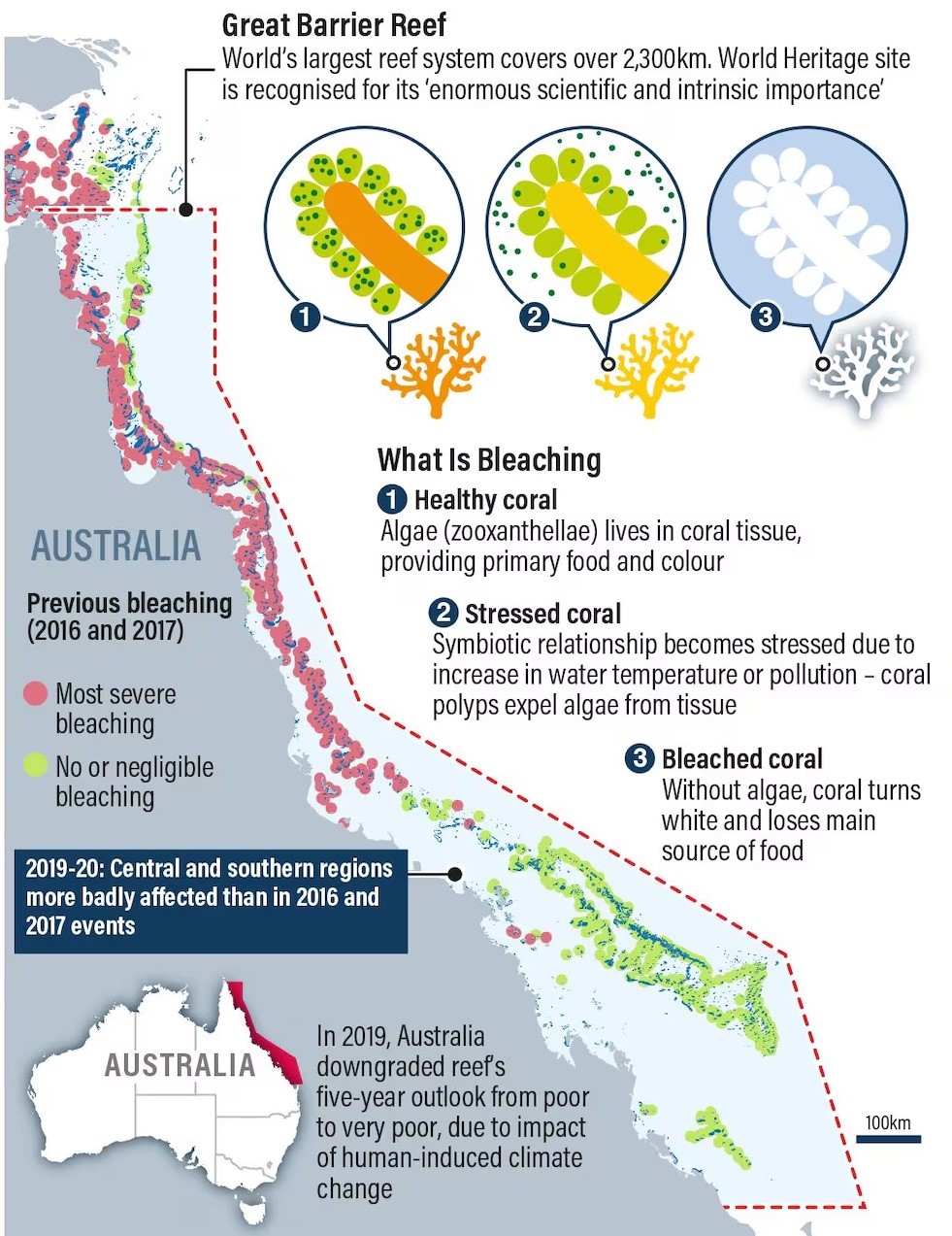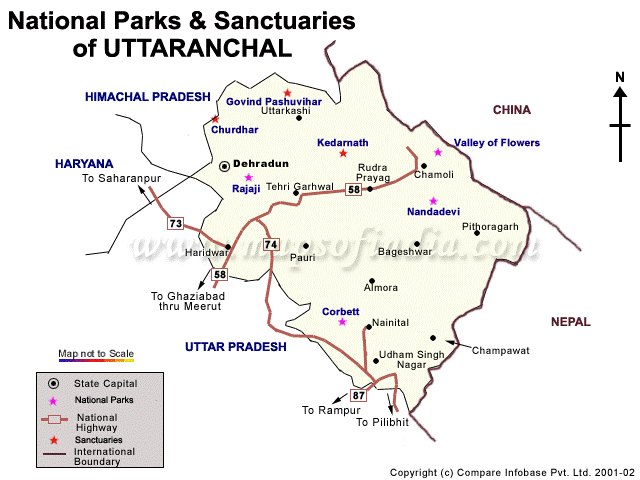The US National Oceanic and Atmospheric Administration (NOAA) has said that the world is on the brink of a fourth global mass coral bleaching event which could see many tropical reefs killed by extreme ocean temperatures, including parts of Australia’s Great Barrier Reef.
To address a defined need of coral reef managers around the world, NOAA established the Coral Reef Watch (CRW) program in 2000.

Bleaching in GBR
The Great Barrier Reef is one of the natural wonders of the world and was inscribed on the World Heritage List in 1981 for its unique natural attributes and enormous scientific and environmental importance.
El Niño is a natural climate cycle characterized by warmer-than-usual waters in the Pacific Ocean, typically increases average air and sea temperatures and can have a significant effect on rainfall, hurricanes and other severe weather.
The world’s most southerly coral reef, at Lord Howe Island off Australia’s New South Wales coast, is also being hit by coral bleaching.
Kalagi town, earlier known as Kaluge, a wonder of Chalukyan architecture now languishes in neglect.
|
Chalukyas |
|
Kalagi
Karnata Dravida Style Architecture
|
Temples in Kalagi |
|
Suryanarayana Temple |
|
|
Jain Basadis |
|
|
Mallikarjuna temple |
|
The Hindu – A wonder of Chalukyan architecture now languishes in neglect
The Blue Leaders High-Level Event on Biodiversity Beyond National Jurisdiction was held in Belgium.
The high seas are areas beyond 200 nautical miles from the exclusive economic zones of coastal countries. No country is responsible for the management and protection of resources on the high seas.
The UNOC Conference 2022 was co-hosted by the Governments of Kenya and Portugal.
The Supreme Court condemned the illegal felling of over 6,000 trees for eco-tourism at the Jim Corbett National Park.

|
Project Tiger |
|
The 22nd Law Commission headed by Justice Ritu Raj Awasthi has recommended a legislation to protect trade secrets with a provision to protect whistle-blowers.
Law Commission of India is a non-statutory body and is constituted by a notification of the Government of India, Ministry of Law & Justice, Department of Legal Affairs to make recommendations to the Government in the form of Reports.
|
Other Important Topics |
||||
|
India's 1st Marine Force |
||||
|
The Tamil Nadu Forest Department has recently launched the country's 'first' marine force in Ramanathapuram.
|
||||
|
‘Measles and Rubella Champion’ Award |
||||
|
||||
|
Nyaya Sahayak Program |
||||
|
The Nyaya Sahayak program will be launched in 500 Aspirational blocks in India.
|
||||
|
Gramdan |
||||
|
The Maharashtra government recently notified Mendha village as a separate Gram Panchayat under Maharashtra Gramdan Act, 1964.
|
||||
|
Zero-food children |
||||
|
India has ranked high in a recent study calculating the prevalence of zero-food children across 92 Low and Middle-Income Countries (LMIC).
|
||||
|
Patagonia Cave Paintings |
||||
|
Archaeologists have discovered the earliest dated cave paintings in South America in Argentine Patagonia, dating back 8,200 years.
|
||||
|
Nomination of members to Rajya Sabha |
||||
|
Ms. Sudha Murty was recently nominated as the member of Rajya Sabha by President Droupadi Murmu.
|
||||
|
Indopria Angulata |
||||
|
A new genus and species of parasitoid wasp has been discovered by a team of researchers at the Zoological Survey of India (ZSI), Kolkata.
|
||||
|
Advanced Medium Combat Aircraft (AMCA) |
||||
|
Cabinet Committee on Security has recently approved the development of a stealth fighter, the AMCA.
|
||||
|
Sharavathi pumped storage project |
||||
|